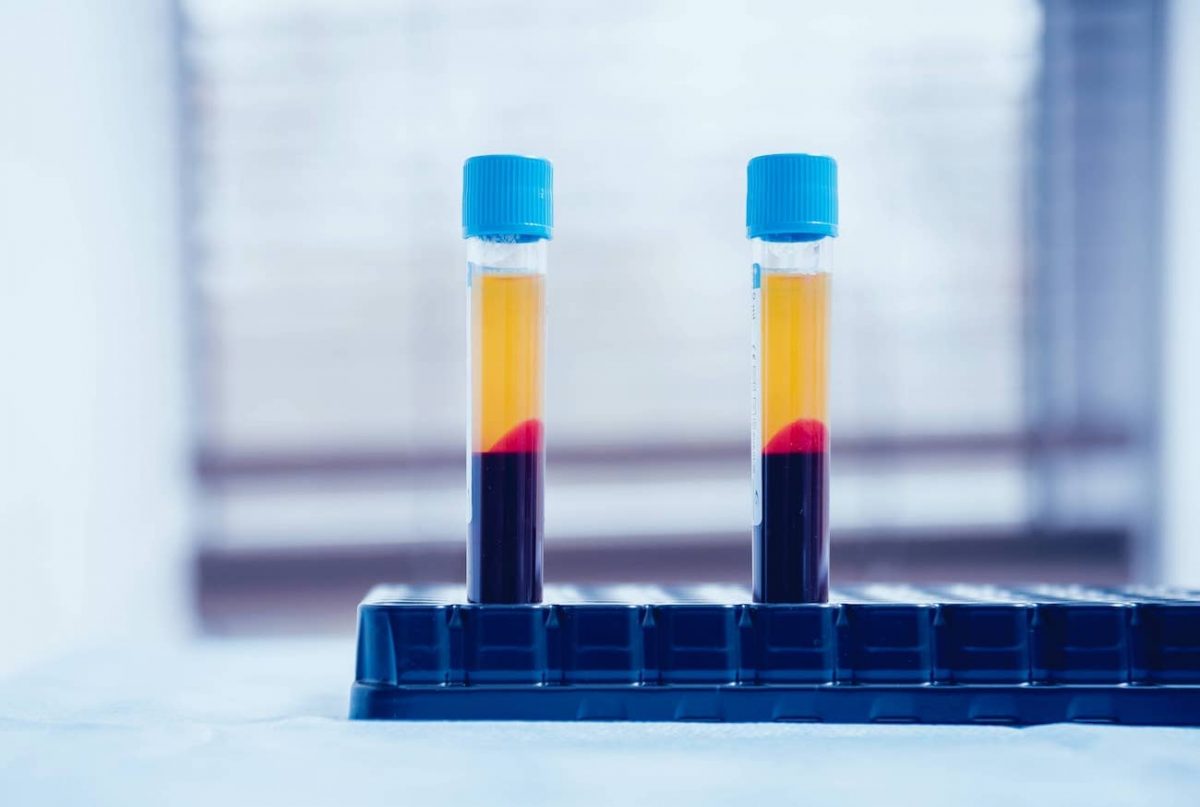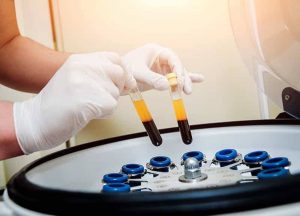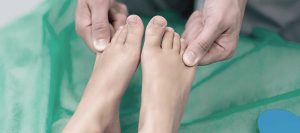
Platelet Rich Plasma Treatment (PRP) injections are fairly new, but they have come to be most effective in treating tendon and ligament injuries such as: plantar fasciitis; Achilles tendinitis; cartilage; bone issues and arthritis.
Known to reduce joint pain and improve function, the patient’s own concentrated blood platelets, which are the small cells in blood that help clotting, are first isolated and then injected into the injured area of the foot or ankle to stimulate healing.
In some instances, PRP injections can reduce the need for medications and/or surgery.

How Does Platelet Rich Plasma Treatment Work?
In order to fully understand the nature and power of this procedure, it is necessary to define both plasma and platelet-rich plasma.
The clear liquid that makes up our blood is plasma. It carries in its flow throughout our bodies red blood cells, white blood cells, platelets and other cellular elements. Plasma is also rich in various proteins that help the body regenerate new cell and tissue growth.
Platelet-rich plasma is highly concentrated, and it contains many more proteins and platelets than blood plasma itself. It is always used to relieve painful symptoms and to promote healing in real time.
The powerful abilities of PRP are achieved with just a small amount of blood that is spun in a horizontal centrifuge at high speed.
This machine spins the blood at high velocity, and is sometimes aided by the addition of thrombin and calcium chloride.
Blood components are separated into distinct layers of red blood cells, white blood cells and plasma, which further elevates the platelet structure to a concentration level that is 3-5 times higher than that found in normal human blood.
The area slated for injection is throughly cleaned and a syringe is filled with PRP.
The process is guided by the imaging of an ultra sound machine that helps the doctor direct the injection to the precise area where it will do the most good.
Our JAWS Podiatry quality control program ensures that PRP preparations are of the highest standards and consistency, but at the same time they can also be customized to meet the specific needs of patients.
A surgeon may recommend more than one injection or even series based upon both the injury being treated and a patient’s initial response to the particular therapy.
The Key Foot And Ankle Conditions Helped By PRP Injections
PRP injections are known to effectively treat a number of health conditions related to feet, ankle joints, muscles and tendons.
Common issues that are often addressed include the following list:
This can occur either from a sudden trauma, such as a fall, or it can develop over the course of time. No matter what the cause, this condition is almost always associated with intense, unrelenting pain.
PRP injections can help accelerate both healing and recovery. More than one injection may be needed, depending on the severity of the condition.
Our experts at JAWS Podiatry generally recommend regenerative treatments in the form of a PRP injection for ankle ligament-related injuries.
While they do help, they should not be considered “miracle cures” or “silver bullets” because while they do help the body rebuild new and stronger tissues, it is a process that does require some time.
Platelet-rich plasma (PRP) is a potentially efficacious treatment for ankle osteoarthritis (OA), but its use has not been examined in high-quality studies.
Ankle OA is more common than hip or knee OA in the young active population. PRP injections in ankle OA are shown to be safe and improve the quality of life over time.
This condition happens when this thick band of tissue is over stretched or over used, which in turn affects proper mobility, causes an inflammation and much pain.
It is known to happen where there is either an enduring inflammation or when there is a restricted blood flow for a significant period of time, which can extend for months and even years.
Patients who suffer from plantar fasciitis who have found no relief or cure from conservative treatments or cortisone injections may benefit from PRP injections because they promote the body’s natural healing process by helping to repair damaged tissues and reduce both pain and inflammation levels.
Distinguished from plantar fasciitis because that there is no inflammation associated with this condition, this painful disorder occurs among people with sedentary lifestyles, those who wear high heeled shoes, were born with unusually high or low foot arches or have tight calf muscles or Achilles tendons.
PRP injections have only recently been used here, but hey have proven themselves to be a source for healing ,growth and the break down of chronic scar formations that are barriers to proper healing.
Although in many cases a muscle sprain may well heal on its own, with some people recurring pain can endure for for several months after the initial injury.
In these cases, a PRP injection can effectively bolster the body’s ability to heal on a cellular level.
Reasonable And Usually Great Expectations
There are usually few if any side effects resulting from a PRP injection because of the fact that a patient’s own blood is utilized for treatment. Mild pain and irritation may occur a few days after the injection.
Usually, it takes a few weeks to feel the full effects of the injection, but sometimes patients experience improvement within just a few days.
Rest for a day or two is often recommended as well as physical therapy sessions to strengthen the affected area.
A doctor may also request that patients limit motion or weight-bearing activities immediately following the injection. Wearing a boot, cast or brace can ensure stability.
Call Our Teams For More Info On Platelet Rich Plasma Treatments
We are a leading, cutting edge, minimally-invasive podiatrist center headed by Dr. Abraham Wagner, South Florida’s highly acclaimed and very popular podiatric surgeon.
Our client base extends far beyond our local confines, and patients come from all across the country and the world to experience the professional, loving care offered by Dr. Wagner and our dedicated staff.
We’re always here to answer questions and perform a wide range of treatments and surgeries, including those involving Platelet Rich Plasma injections.
You are always in good hands (and feet) when dealing with JAWS Podiatry!
Call our teams today and see what we can do for you and your feet!
Video Transcription
Hello Everyone- I hope all is well. Today we are performing a (PRP) Platelet Rich Plasma injection that we do a lot of here at JAWS Podiatry. Here we have a gentlemen who presented us with….that had been hurting for several months. He has exhausted conservative measures including but not limited to: injection therapy, cortisone shots, some anti-inflammatory, some taping strategies…, but it’s kind of at the point now where it has affected his daily life activities. He has presented to us, we have evaluated the patient and we have decided to pursue with a PRP injection today. Again, it’s is an alternative to other therapies that we have tried in the past, and we have had great success with this (PRP). So without further adieu, we are going to use the ultrasound to make sure that we deliver the PRP to the exact location or affected area. With this quantity of blood (in syringe he is holding) we are actually going to be able to isolate the platelets that contain growth factors and very important cells that aid in lowering inflammation and regenerating the damaged tissue. So we are going to go ahead now. This is the platelet rich plasma (holding syringe) and we are going to inject it into the affected area. Now ww use the ultrasound and the patient usually will feel some burning, some minor discomfort and again, you guys can’t see it but you can see everything from the ultrasound. He is doing just great and just like that, we are done. So again, the occasion for PRP are: fractures, heel pain, plants fasciitis, chronic tendonitis and chronic tendonosis. We always have great success with this. If you have any questions, pease feel free to reach out to us at www.jawspdiatry.com
- The Life-Changing Power of Cosmetic Foot Surgery - February 27, 2023
- What Are The Most Common Pediatric Foot Conditions? - October 5, 2020
- 4 Important Things To Know Before Having Foot Surgery - September 21, 2020



